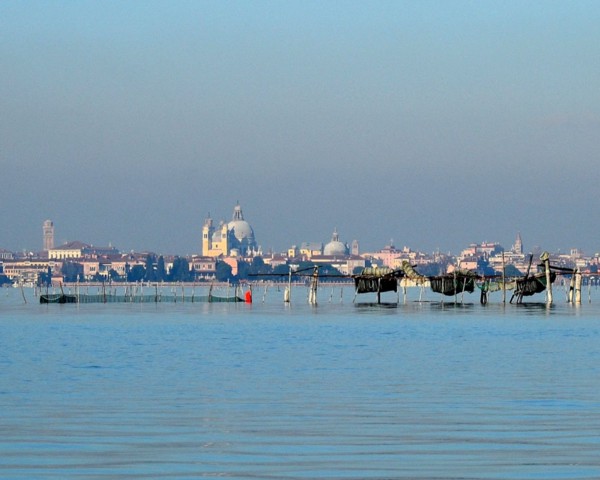The Girl from Venice, by Martin Cruz Smith
From it’s evocative cover to its low key, upbeat ending, The Girl From Venice is an enjoyable, surprisingly romantic outing from Martin Cruz Smith.
Martin Cruz Smith has a history of writing highly intelligent characters into interesting, atmospheric locations that reek of history. Most famously, Arkady Renko is the brilliant, morose Russian detective, whose travails chronicle the last 40 years in Russia. Cruz Smith has a talent for rendering characters who are smarter than we are, and making us believe it.
In The Girl from Venice, he steps outside the world of smart detectives to bring us Cenzo, an ordinary fisherman from Venice who drags a dead (or wait, is she?) Giulia from the lagoon. It’s WWII and the Nazis are hard at work trying to find Giulia for reasons unknown. The ominous threat of the Nazi invasion hangs over our heads, as Cenzo and Giulia circle each other warily.

Smith waxes lyrical about the subject of fishing regularly, but with impressive detail.
For a fisherman, the subject of nets was deep and complex. A bragotto could be towed by two people collecting small fry, whereas a baicolera was a winged net designed to catch the noble sea bass. A seragia had as many as six nets staked in a circle. A saltarello was a spiral net for sea bream and shad. A half-moon net was a mezza luna. Most ingenious and beautiful of all was pesca il cielo, a net that floated high above the water to “fish the clouds.”
And there were seasons. Fish left the lagoon in the wintertime and didn’t return until March to lay eggs in warm water. There was fidelity; swordfish swam together, male and female. There were troublemakers: spider crabs trying to get free made a mess out of nets. Dolphins made a banquet out of fish trapped in the nets. Every net, no matter how different its design, ended in a death chamber.
Most mysterious of all creatures was the soft-shelled crab. At the first tinge of dawn, Cenzo took Giulia into a swamp where narrow channels wended through tall spartina grass. At a dock were stacks of boxes and bags and a dozen indolent cats.
“October is the best time for catching crabs, November’s not so bad, and in winter they’ve gone out to sea. March, they’re back to lay their eggs. In June you have to check your crab pots twice a day. That’s your calendar.
But it’s WWII and Cenzo and Giulia are soon separated.

Moving from Venice to Salo on Lake Garda to the Italian Alps to Milan, and featuring a cast of movie producers, resistance fighters, fisherman and barmen, The Girl from Venice is cinematic and enjoyable. It’s a self-described romance, but sometimes I think the romance is for the fishing of Venice; the fishing scenes sometimes seem more lovingly described than the romantic scenes!
Martin Cruz Smith’s prose is effortless and a slick as fish scales, with nary a wrong word to get hung up on. The characters of The Girl from Venice all ring true, if occasionally veering towards stereotypes. As a war-time thriller and romance, Girl from Venice works very well. Fans of Alan Furst will feel right at home inside this novel. Fans looking for the dark humor and penetrating human insight of Arkady Renko mostly won’t find it here. But Arkady is such an iconic figure that it’s no small writerly feat for Smith to escape his clutches, and not end up with Italian-Arkady-in-WWII.
Fans of WWII fiction or fishing or both, will greatly enjoy this latest from Martin Cruz Smith.

